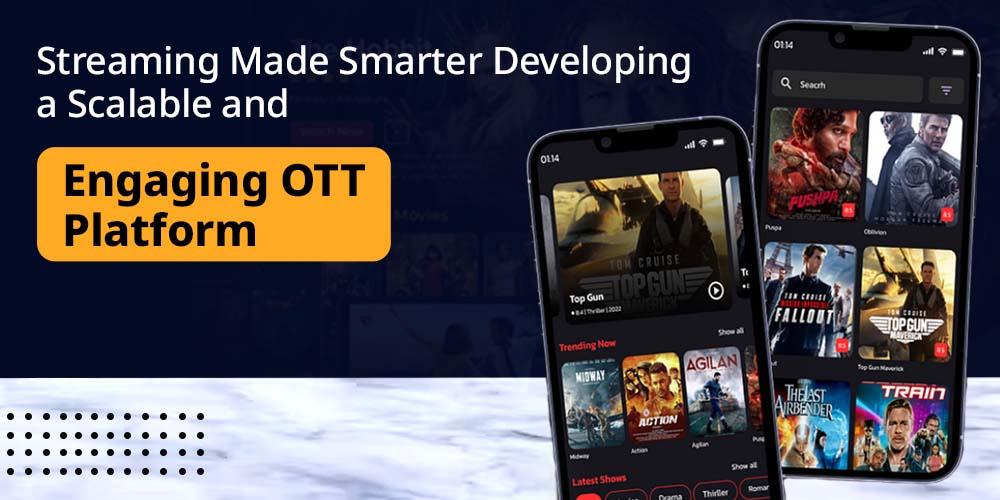Understanding OTT Platforms
What is an OTT Platform?
An OTT (Over-The-Top) platform delivers video content directly to viewers over the internet, bypassing traditional cable or satellite services. This model allows for more immediate access to a wide array of content, enhancing viewer convenience and flexibility.
Importance of Scalability
Scalability is vital in the OTT landscape because it allows platforms to grow without compromising performance. With increasing demand from larger audiences, a scalable OTT platform can efficiently handle traffic spikes without frustrating users.
Key Features of a Successful OTT Platform
User Experience
A smooth user experience is crucial for any OTT platform. Here’s what to consider:
- Intuitive Interface: Design an easy-to-navigate layout.
- Fast Loading Times: Optimize for speed to retain viewer interest.
- Cross-Device Compatibility: Ensure accessibility on smartphones, tablets, smart TVs, and more.
Content Delivery Network (CDN)
A robust CDN is essential for distributing content efficiently to global viewers. It minimizes lag and buffering by using multiple servers to deliver content from the nearest location to the user. When selecting a CDN provider, consider:
- Reliability and uptime.
- Geographic coverage.
- Scalability options.
Monetization Strategies
A successful OTT platform needs a sustainable revenue model. Here are common monetization strategies:
- Subscription Video on Demand (SVOD): Charge viewers a monthly fee for access to content.
- Ad-Supported Video on Demand (AVOD): Offer free content supported by advertisements.
- Transactional Video on Demand (TVOD): Allow users to purchase or rent specific titles.
Building Your OTT Platform
Choosing the Right Technology Stack
Your technology stack will directly affect the performance of your OTT platform. Consider:
- Streaming Protocols: Utilize HTTPS for video delivery to enhance security.
- Content Management System (CMS): Choose a CMS equipped for media management and user engagement.
- Frontend Framework: Select one that allows for easy updates and scalability.
Implementing Security Measures
Security is a top concern for OTT platforms. Key steps include:
- Implementing DRM (Digital Rights Management) to protect content.
- Establishing secure payment gateways.
- Regularly updating software to fend off vulnerabilities.
Working with Content Licensing
Content licensing is critical for offering quality media. Ensure that:
- You have the rights to stream the content.
- You maintain compliance with local regulations.
- You explore partnerships to broaden your content library.
Engaging Your Audience
Personalized Recommendations
Implementing smart recommendation algorithms can significantly enhance user experience. Factors to consider:
- User viewing history.
- Popularity metrics of content.
- Viewer preferences and ratings.
Community Engagement
Fostering a community can enhance viewer loyalty. Strategies include:
- Social media integration: Encourage sharing and discussions.
- Live events: Host Q&As or behind-the-scenes content.
- User feedback loops: Enable viewers to suggest content or provide reviews.
Measuring Success
Key Performance Indicators (KPIs)
To assess the effectiveness of your OTT platform, track KPIs such as:
- Monthly active users.
- Average viewing time per session.
- Churn rate: Measure how many users drop their subscriptions.
Feedback Collection
Gathering feedback is crucial for ongoing improvements. Utilize:
- Surveys after viewing.
- In-app feedback options.
- Social media for direct viewer engagement.
Conclusion and Call to Action
In conclusion, focusing on streaming made smarter can lead to the successful development of a scalable and engaging OTT platform. By prioritizing user experience, implementing a solid technology stack, and fostering audience engagement, content providers can create a thriving OTT ecosystem.
Are you ready to elevate your streaming platform? Engage with us today to explore collaboration opportunities and insights on developing a successful OTT service!

